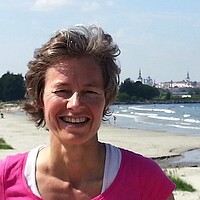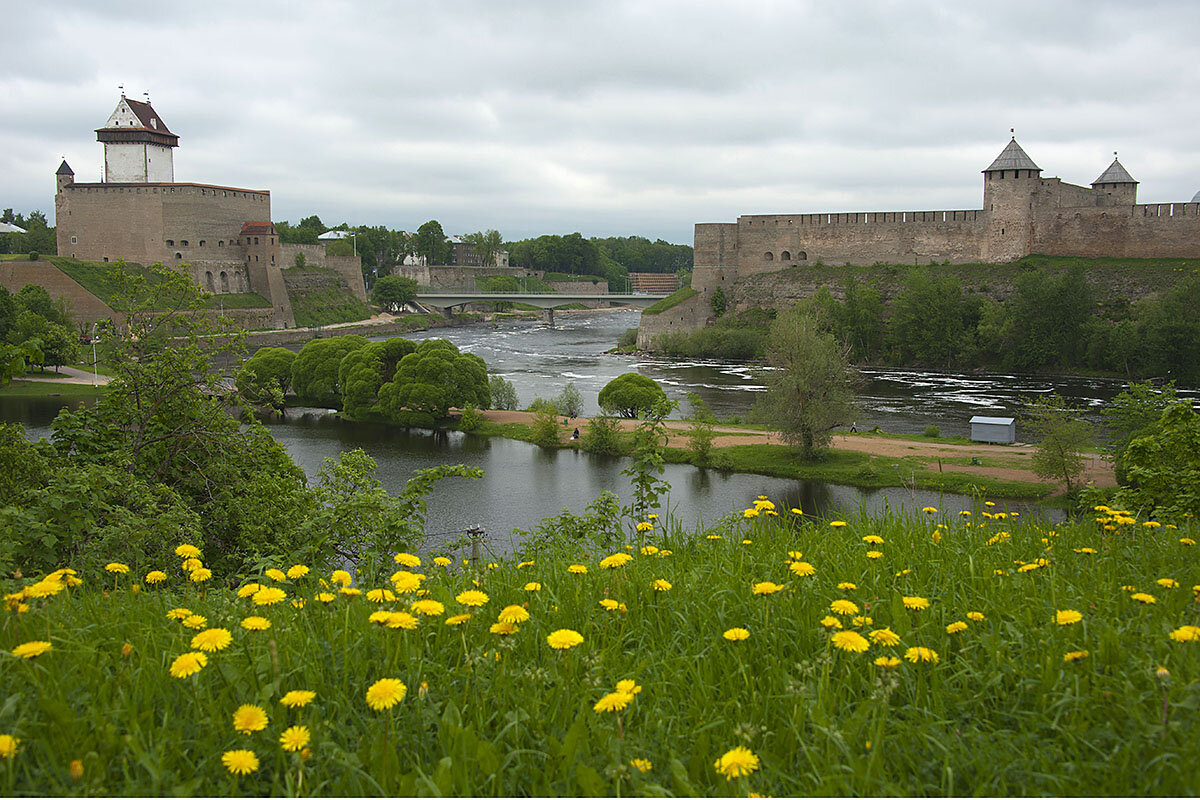As Estonia turns 100, a new embrace of its Russian speakers
Loading...
| NARVA, ESTONIA
Marina Kossolopova felt doubly honored. On Wednesday, Estonian President Kersti Kaljulaid awarded the school choir director a prestigious medal, to honor her contribution to Estonian society. And moreover, the president came here, to her town, a long-neglected Russian enclave on Estonia's eastern border with Russia.
“This attention should have come a long time ago,” says Ms. Kossolopova. Originally from Chelyabinsk, close to the Ural mountains, she’s among Estonia’s estimated 300,000 Russian speakers, most of whom were brought in from the USSR’s four corners in Soviet times.
Ever since Estonia regained its independence in 1991, many Russian speakers have felt like second-class citizens. This young country, which was occupied most of its history – by the Danes, Swedes, Germans, Russians, and the Soviet regime – has regarded them as more Russian than Estonian, and indeed, the Russian-speaking population has looked eastward more than westward for identity. The situation festered for years, with little progress on integrating the two populations.
But in the past few years, Estonians on both sides of the divide have made strides to bridge the gap, and make the country's Russian-speaking community feel a part of the country in a way they haven't before. The issue has taken on national security significance since Russia's annexation of Crimea in 2014, which raised fears about the Kremlin using its strong media apparatus to divide loyalties among Russian speakers, and threaten national cohesion.
President Kaljulaid’s visit, on the eve of Estonia's 100th birthday Saturday, is one such bridge-building measure, and marks a “huge symbolic milestone,” says Kristi Raik, director of the Estonian Foreign Policy Institute at the International Center for Defense and Security in Tallinn. “It shows that Estonia truly treats Narva as part of Estonia and the inhabitants of Narva as part of the Estonian people.”
Changing winds in Estonia
When Estonia regained its independence from the Soviet Union, it had a transformative effect on the lives of the newly free country's Russian speakers, most of whom had been relocated there from elsewhere in the USSR under Soviet programs. They lost their identity overnight, going from Soviet citizens to former “occupiers” resented by the new Estonian-speaking majority. The war, Soviet occupation, and Stalinist terror left people with an almost existential fear of losing their identity.
This trauma led the new government to take a hard line on the Russian speakers, granting citizenship only to those living in Estonia before 1940 – in other words, very few people – and making candidates for citizenship pass a difficult language test.
The societal divide was mirrored in politics. Estonia's dominant political party was long the center-right Reform Party. Reform politicians made Estonia the first ex-Soviet state to join the eurozone in 2011 but implemented austerity measures that hit Russian speakers particularly hard.
“For years at every election, Reform politicians came up with the same stories: ‘There are Russians and there are Estonians. If you are Estonians you should vote for us, everything coming from the east side is bad,’” says Züleyxa Izmailova, the chair of Estonia’s Green Party.
Feeling disenfranchised, most Russian speakers backed the Center Party. But the Center Party's ties to the Russian ruling party United Russia, in large part due to party co-founder and Tallinn mayor Edgar Savisaar, made it an unacceptable partner for any Estonian party to work with.
But in 2016, Jüri Ratas became party leader and then prime minister after the previous Reform Party office holder failed a no confidence vote and the Center Party entered government for the first time. Mr. Ratas has moved to ease tensions between Estonian speakers and Russian speakers, pledging to ease citizenship rules and invest in the depressed border region’s economy, while also reaffirming Estonia’s commitment to the EU and NATO.
“We’re too small a country for us to be divided into smaller communities,” Ms. Izmailova says.
‘We have to do something about Narva’
From the banks of the Narva River in Estonia, one can see the Russian flag waving from Ivangorod, a medieval fortress just on the other side. Indeed, Narva, the dividing line between the European Union and the Russian Federation, is a place where conflicting visions of history – and the world – still play out.
Narva residents feel the Soviet army “liberated” Estonia from Nazi Germany in 1944, but Estonians say it began a long painful occupation. Narva politicians say the new NATO presence in the Baltic states has created unnecessary tension with Russia. “But when I hear [Russian] shots and military exercises across the river, I feel safer with NATO," says Katri Raik, director of the Estonian Academy of Security Sciences.
Here, people tend to listen Russian television. And many admire Vladimir Putin. But Narva residents also have family and friends just across the river in the city of Ivangorod, so they know about the potholed streets and rampant corruption there; they say that moving to Russia is not an option.
Ivan Sergejev, who recently returned to his native Narva from New York to become its city architect, says that what’s needed in Narva is to “create a climate where people feel welcome to live” and the nonprofit sector is more vibrant. Complaining about the lack of cultural venues, Mr. Sergejev spearheaded a move to turn Narva’s many vacant factories into creative industry hubs.
There are signs that is happening. Allan Kaldoja, for example, is replicating a theater model he initiated in Tallinn, where he turned a vacant Soviet factory into a successful theater venue called Vaba Laba. “Mr. Putin helped us by attacking Ukraine, because politicians started saying, ‘Oh yes we have Narva, we have to do something about Narva!’ ” Mr. Kaldoja, a native, says. “Before that nobody really cared.”
Narva’s own Vaba Laba theater, now under construction, is slated to house theater groups from Petersburg and Moscow as well as after-school theater workshops for local children. The offices of the Estonian Integration Foundation, an agency that is promoting the learning of Estonian, is slated to move to Narva at the end of the year, and could move into the Vaba Laba complex, officials say. A new arts residency program at the old Kreenholm factory has brought local folks and artists together, injecting needed life into a depressed neighborhood.
The Estonian president, too, has thrown her weight around Narva. In January she said she’d move her offices here for one month in 2018. She also supports Narva's bid to be nominated European Capital of Culture when it is Estonia's turn to receive the honor in 2024.
“A process has begun,” Kaljulaid said in Narva on Jan. 23. “The people of Narva have found themselves as a community, and the people of Tallinn want to help the people of Narva function as a community like everyone else in Estonia does.”







